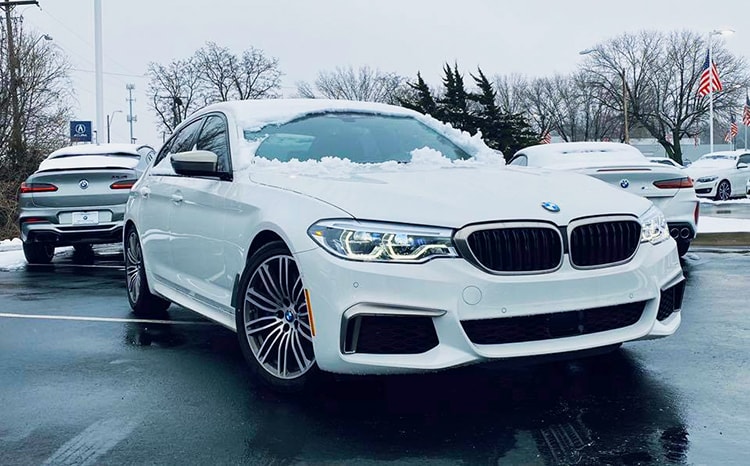How to properly warm your vehicle

We get it. It is cold. And a long commute awaits.
Honestly, the only thing you want to do in the moment -- aside from going back to bed -- is turn on your vehicle and immediately head to work. It happens millions of times every morning around the world.
“Not so fast, my friend,” said the great Lee Corso, former head football coach and analyst for ESPN’s ‘College Football Game Day.’
Believe it or not, you may be harming overall performance and longevity if you are not properly warming your vehicle. Contrary to popular belief, the process involves more than just turning on the ignition and waiting a minute or two.
Let’s explore the importance of warming up your vehicle and outline ways to ensure your engine is ready to tackle the cold with ease.
HENDRICKCARS.COM I SEARCH INVENTORY I SCHEDULE SERVICE I CAREERS
Fluid Circulation: Cold temperatures can cause engine fluids, especially oil and coolant, to thicken. Warming your vehicle allows these fluids to reach their optimal viscosity, ensuring smooth circulation and proper lubrication of engine components.
Battery Performance: Battery efficiency is significantly reduced in cold weather. Warming your vehicle gives it a chance to reach optimal operating temperature, enhancing its ability to deliver power and operating efficiency.
Interior Comfort: While the primary focus needs to be on mechanical function, warming your vehicle also ensures a better driving experience. It helps defrost windows, warm your cabin and soften many of your vehicle’s interior components – making them pliable and less prone to damage.
Transmission Readiness: This is an underrated – yet important – beneficiary in this process. Automatic transmissions need fluids to reach a proper operating temperature for them to complete smooth and efficient gear changes. Hardened components don’t operate at the highest level.
HENDRICKCARS.COM I SEARCH INVENTORY I SCHEDULE SERVICE I CAREERS
It’s also important to understand the proper process for warming your vehicle.
Engine Start: This is important, people! Start your engine and allow it to idle. Modern engines are designed to run efficiently, even in cold temperatures – so there isn’t a need for prolonged idling.
Monitor RPMs: Keep an eye on your RPM (Revolutions Per Minute) gauge. Once your engine reaches between 1,000 and 1,500 RPMs, your engine is warm. Avoid excessive revving during this phase, as it may lead to unnecessary fuel use and increased emissions.
Drive Gently: After a few minutes of warm-up, begin driving gently. Avoid aggressive acceleration, allowing the engine to further warm as you drive. Gentle driving helps to distribute heat more evenly.
Gradual Increase: If possible, gradually increase the load on the engine by using accessories like the heater and defroster. This aids in quicker warm-up by increasing the workload on the engine.
Avoid Prolonged Idle: Excessive idling is not beneficial for your vehicle, as it does little to speed up the warming process. Once you have driven for a few minutes, the engine is typically warm enough for optimal performance.
To ensure your vehicle has a long lifespan and operates at peak performance, it is critical that you adopt these warm-up procedures – especially if you live in climates with extremely cold conditions.
As they say, happy – and toasty – motoring!
HENDRICKCARS.COM I SEARCH INVENTORY I SCHEDULE SERVICE I CAREERS
 AdChoices
AdChoices